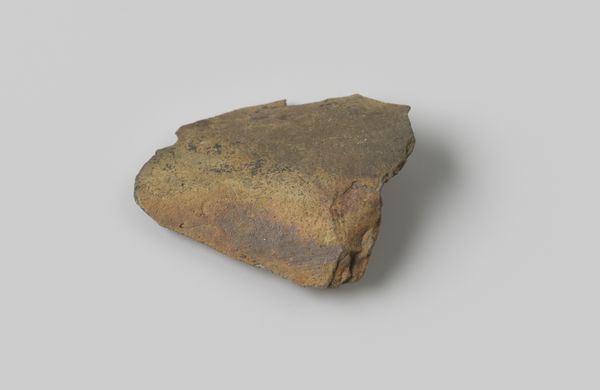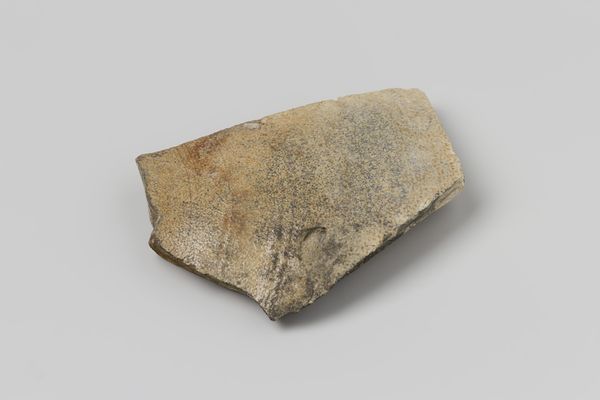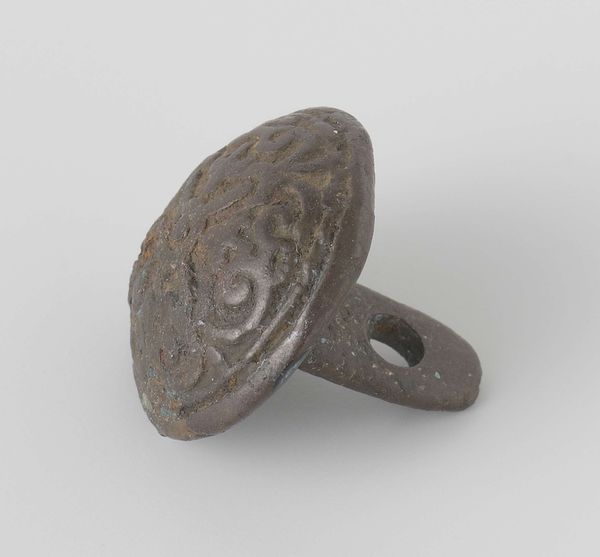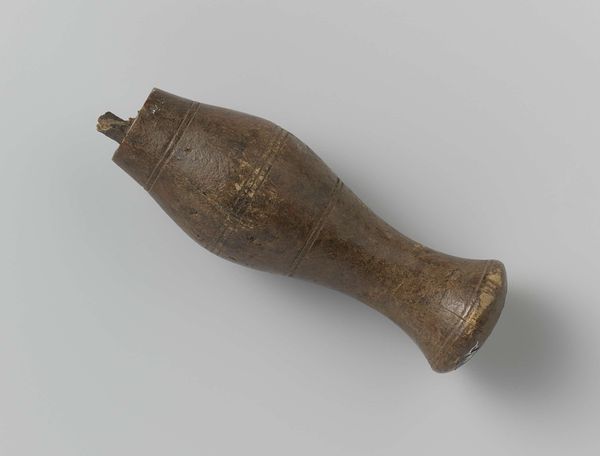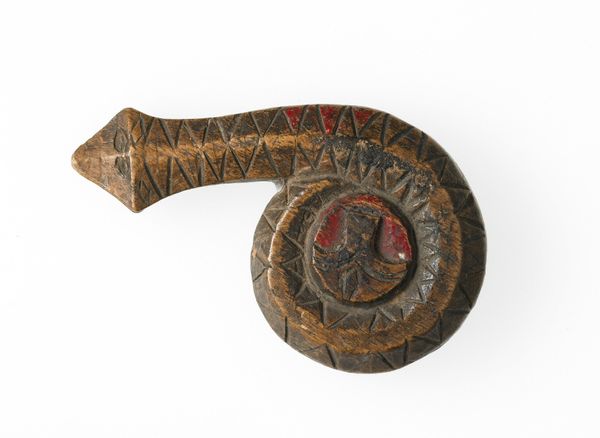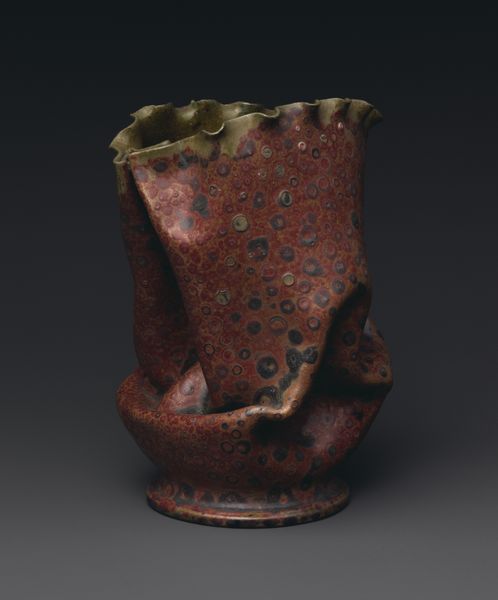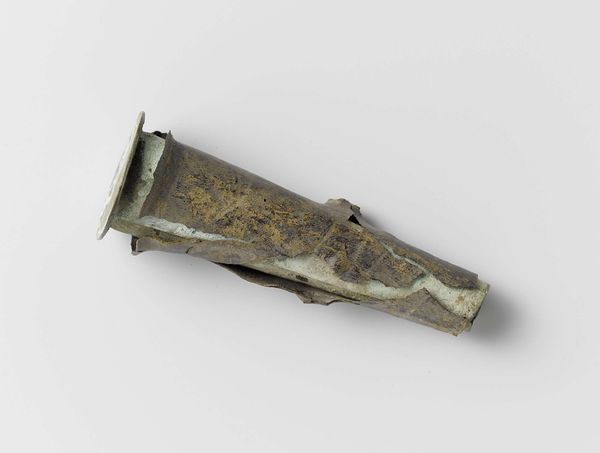
Left Pauldron (Shoulder Defense) Belonging to an Armor for Field and Tournament Made for Duke Nikolaus "The Black" Radziwill (1515–1565), Duke of Nesvizh and Olyka, Prince of the Empire, Grand Chancellor and Marshal of Lithuania 1530 - 1900
0:00
0:00
metal
#
medieval
#
metal
#
history-painting
#
armor
#
decorative-art
Dimensions: H. 8 1/2 in. (12.6 cm); W. 12 1/2 in. (31.7 cm); Wt. 1 lb. 10 oz. (730 g)
Copyright: Public Domain
Editor: Here we have the Left Pauldron, a shoulder defense made for Duke Nikolaus Radziwill sometime between 1530 and 1900 by Kunz Lochner. It’s currently housed at the Met. I’m struck by the decorative quality of the metal; it feels more ornamental than functional, in a way. How would you interpret this piece, focusing on its visual properties? Curator: Observe the carefully considered balance between form and surface articulation. The pauldron’s curvature, essential for deflection of blows, is juxtaposed with delicate etching and inlay. Consider the lines: The strong, flowing outline defining the protective shape plays against the intricate, almost organic network of decoration, in red, black and perhaps even some gilding. What does this tension suggest to you about the object's function beyond mere protection? Editor: It feels like the object wants to have a conversation. It shows a practical structure alongside this impulse to beautify and embellish with intricate patterns. Almost a blend of power and artistry? Curator: Precisely. Note the use of color and the composition. These are not arbitrary choices; the designer meticulously controlled visual interest and directs the viewer's gaze. Does the craftsmanship displayed transform a utilitarian object into something elevated? Editor: Absolutely, especially considering its display in a museum now; divorced from its original function, the craftsmanship and aesthetic details are all the more heightened. I hadn't initially considered how much the decoration and form work in concert to transform its status. Curator: And does appreciating its pure form, independent of historical narratives, offer another, potentially richer understanding of the object’s beauty and purpose? Editor: I think it does. Focusing on these intrinsic visual properties reveals the maker's sophisticated manipulation of form and surface; it speaks volumes on its own, which adds a new layer of context.
Comments
No comments
Be the first to comment and join the conversation on the ultimate creative platform.

